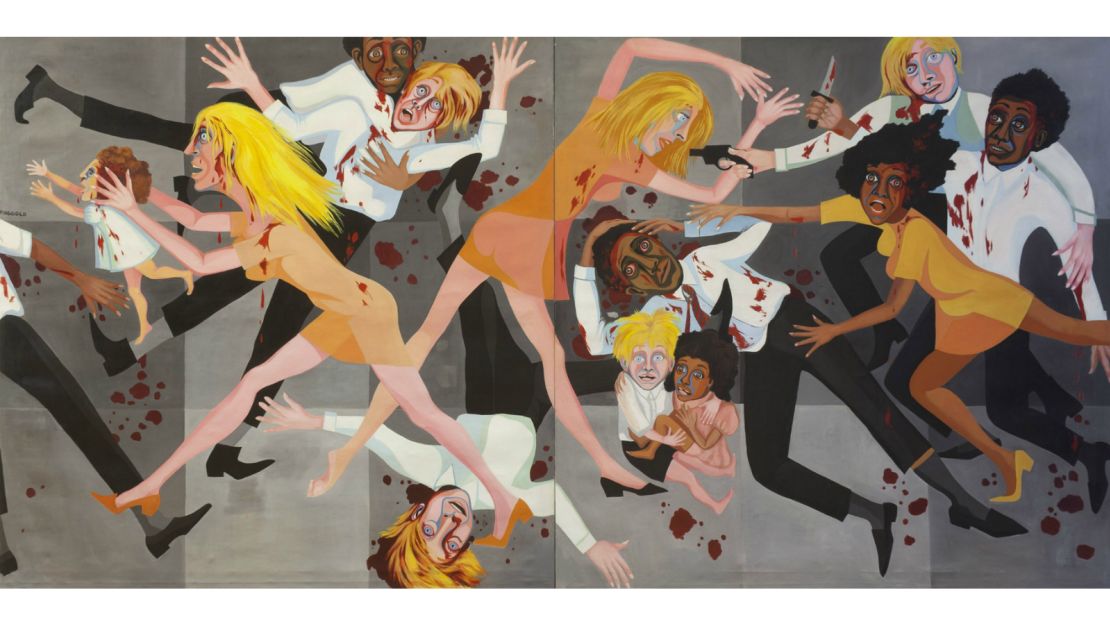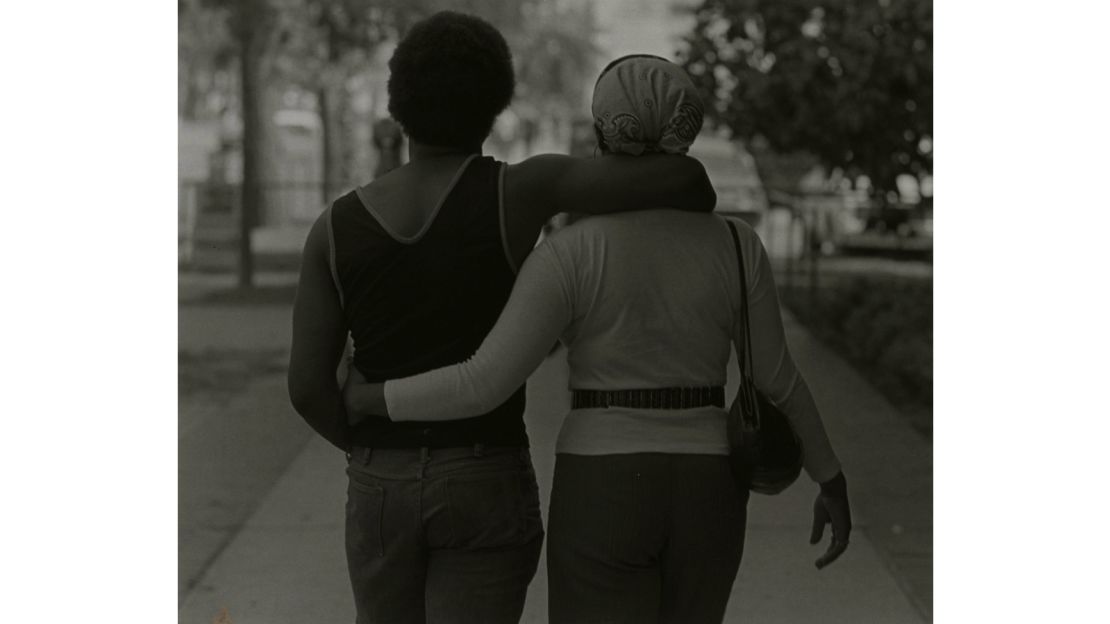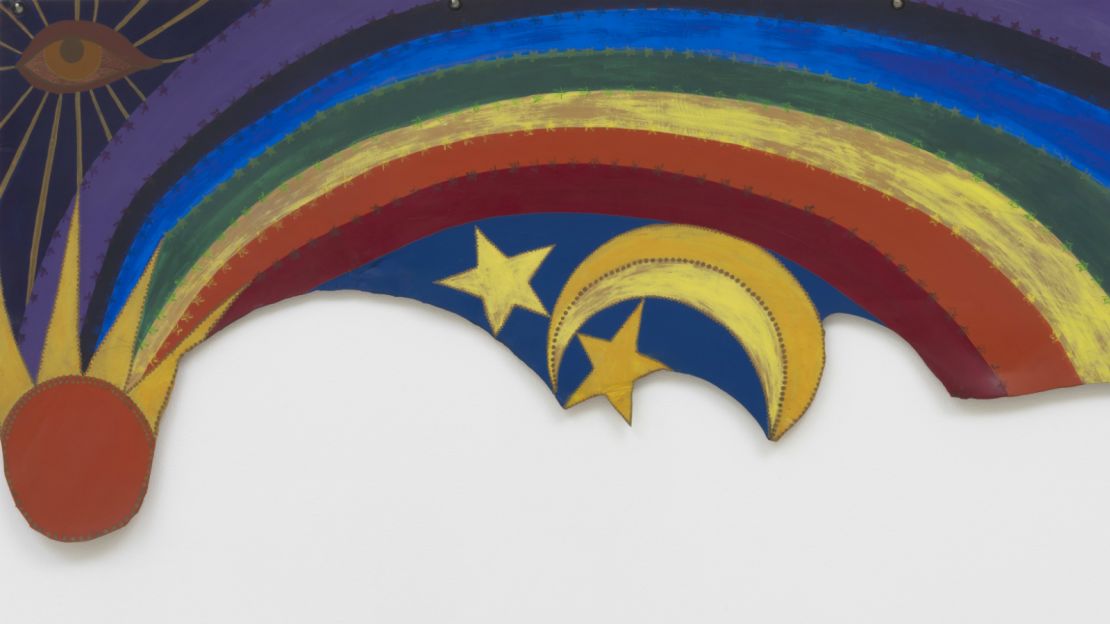The Black Power movement was more than just a protest group; it was a watershed moment in American history and a coming-together of enormous importance and influence – not just socially and politically, but culturally and artistically as well.
The era will be forever associated with landmark literary works like “Notes of a Native Son” by James Baldwin and “The Autobiography of Malcolm X,” songs like Marvin Gaye’s “What’s Going On,” and the films of Melvin Van Peebles and Charles Burnett – searing, highly politicized works coming from a culture that had been denied a voice for so long.
However the wealth of visual artists associated with the movement has often been overlooked, with many institutions handing down the same baby boomer retrospectives over and over again. Curators at London’s Tate Modern, however, were determined to delve deeper with their new show “Soul of a Nation: Art in the Age Of Black Power.” The exhibition features painters, sculptors and photographers whose work was born out of the movement, and tells the struggle of African-Americans in this turbulent period.
“The exhibition covers two decades, starting with the civil rights movement and moving into the birth of Black Power,” said Priyesh Mistry, assistant curator of the exhibition. “African-Americans were making work in response to the social situation, questioning how they should approach their work, who they should be showing it to, in which spaces and areas.”
One movement, multiple visions

It’s clear to see that the great lengths have been taken to show that the art of the period is not defined by one style, one movement, one collective or one superstar artist. It was a diverse front that spread across the length of the United States, encompassing all kinds of aesthetics and ideas from proto-street art, to publishing, to installations and abstract painting.
Sometimes these varying interpretations of the world would even come into conflict with each other, as shown in the first two rooms of the exhibition. While the first room is dedicated to Spiral – the New York-based collective of the early 1960s, famed for their seminal exhibition “First Group Showing: Works In Black and White,” the next room features a work by Faith Ringgold, who’s work was rejected by Spiral.
While the Spiral paintings on show are stark, obscure impressions of a certain psychological landscape, Ringgold’s lurid, violent vista “American People Series #20: Die” is a very different proposition, her vision of Picasso’s “Guernica,” full of knives, blood, scared children and screaming mothers. Both are deeply affecting takes on the Black American experience, but very different in their way of showing it.
This aesthetic diversity continues throughout the exhibition: Roy DeCarava’s haunting street photography is juxtaposed against Betye Saar’s nightmarish sculptures (created with white supremacist ephemera found in flea markets), while Barkley L. Hendricks’ self-portrait of himself standing cockily assured in nothing but a Superman T-shirt, add a sense of cool humor to the proceedings.
A piece like Sam Gilliam’s abstract canvas “April 4” might not seem overtly political on first inspection, but when you realize that April 4 is the date that Martin Luther King Jr. was murdered in 1968, and that those red, circular brush spots might well symbolize bullet holes, the work takes on a whole new power.
‘White is a neutral color…for some people’

Gerald Williams, painter and founder member of Chicago collective AfriCOBRA – whose work is on display in the show – explained what he and his fellow artists were trying to do with their work.
“For us, AfriCOBRA was like turning everything upside down. We had been looking at everything from a Eurocentric point of view, which was where all of our training came from. So we started looking at methods and techniques from a different perspective … Put our paintings in Tate Britain today, and it’s obvious that there’s a difference in vision.”
Looking at Williams work hanging on the wall in front of us over 40 years later, it’s hard not to agree. The visual language on display is still something that is rarely seen in major institutions. The colors alone – all luminous and DayGlo – are very different to the usual international gallery pallet.
“We called them Kool-Aid colors … but we spelt it differently: Coolade,” he said. “When we had our first exhibition in Harlem, the walls were painted purple, pink, green, orange and yellow. White is a neutral color … for some people.”

Despite a few of the artists on show featuring in the permanent collection the Tate and galleries around the world – much of the work on display here has been lying in near obscurity, with some pieces not seen in public for decades.
For Priyesh Mistry, this exhibition is partly about writing some of the wrongs of the past, and bringing these masterpieces to wider notice at long last.
“We all know our American art history, but we only know Andy Warhol and Jackson Pollock,” he said. “So it’s a long time coming for a lot of these artists to be shown and finally get some exposure over here. Hopefully their stories can be introduced to that narrative that we all know, and start to be taught in art schools and art history courses.”
“Soul of a Nation: Art in the Age Of Black Power” at London’s Tate Modern runs until Oct. 22, 2017.




















